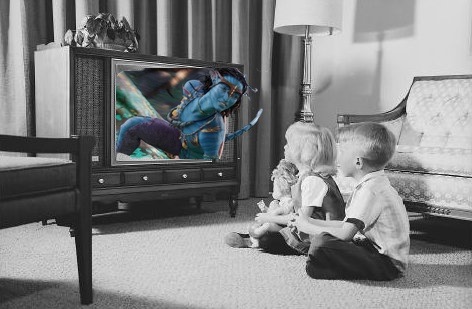 One of the objections often raised against 3D, and with justice, is that people with certain common vision problems can’t see the 3D effect. It just has to do with 3D technology assuming a certain level of intact functionality in the visual system, and the fact is that a significant portion of the population, for one reason or the other, doesn’t meet that level. Our own Matt Burns can’t really see 3D. But he doesn’t let it get him down.
One of the objections often raised against 3D, and with justice, is that people with certain common vision problems can’t see the 3D effect. It just has to do with 3D technology assuming a certain level of intact functionality in the visual system, and the fact is that a significant portion of the population, for one reason or the other, doesn’t meet that level. Our own Matt Burns can’t really see 3D. But he doesn’t let it get him down.
Then there are objections that it could affect the vision of children under 6. Fair enough — but then someone put 2 and 2 together, and thought “wait, couldn’t we use 3D to detect vision problems in the very young, and correct them before it’s too late?” Yes, it appears, we can.
Michael Duenas, from the American Optometric Association (the glasses guys, not the eye surgery guys), calls the 3DS in particular a “godsend” because it may help to diagnose problems like amblyopia (lazy eye) before the issue has solidified into a permanent one. Before kids reach adolescence, much of their visual system (as well as other systems) is still being established, so catching these problems early is essential.

At the same time, let’s not get carried away. Jim Sheedy of Pacific University summed it up well:
“Is there a limit on how much a child should be viewing 3-D? Yeah. How much is it? I don’t know. Let’s use some sound judgment,” he said.
He noted that the No. 1 health issue associated with console and computer gaming is obesity, rather than eye problems.
“Kids should be out running around,” he said.
Well said.